The best and the rest - what we've learned from the NHS Tracker
- Published

The BBC launched its NHS Tracker nearly two years ago. It was the biggest data project of its kind that we had ever done.
Since then, it has been providing the public with up-to-date information about waiting times for accident and emergency units, cancer and routine operations wherever they live in the UK - as well as providing us with insight for news coverage of the health service. Last year, it was expanded to include mental health therapy.
But with the government in England in the process of piloting a new set of targets, the time has come to put it on hold. For now at least.
So what have we learned since it started?
If you can't see the NHS Tracker, click or tap here, external.

Things are getting worse
The three hospital measures the BBC has focused on are the most high-profile targets in the NHS.
The way they are measured in each UK nation varies, particularly for cancer and routine operations.
But in each case, they were set to stretch the health service and encourage it to provide care quickly to patients who needed it.
As a result, the targets have never been achieved all the time.
But for the first time since they were introduced more than a decade ago, we have had a whole 12-month period where no part of the UK met any of the targets.
That milestone was passed last year.
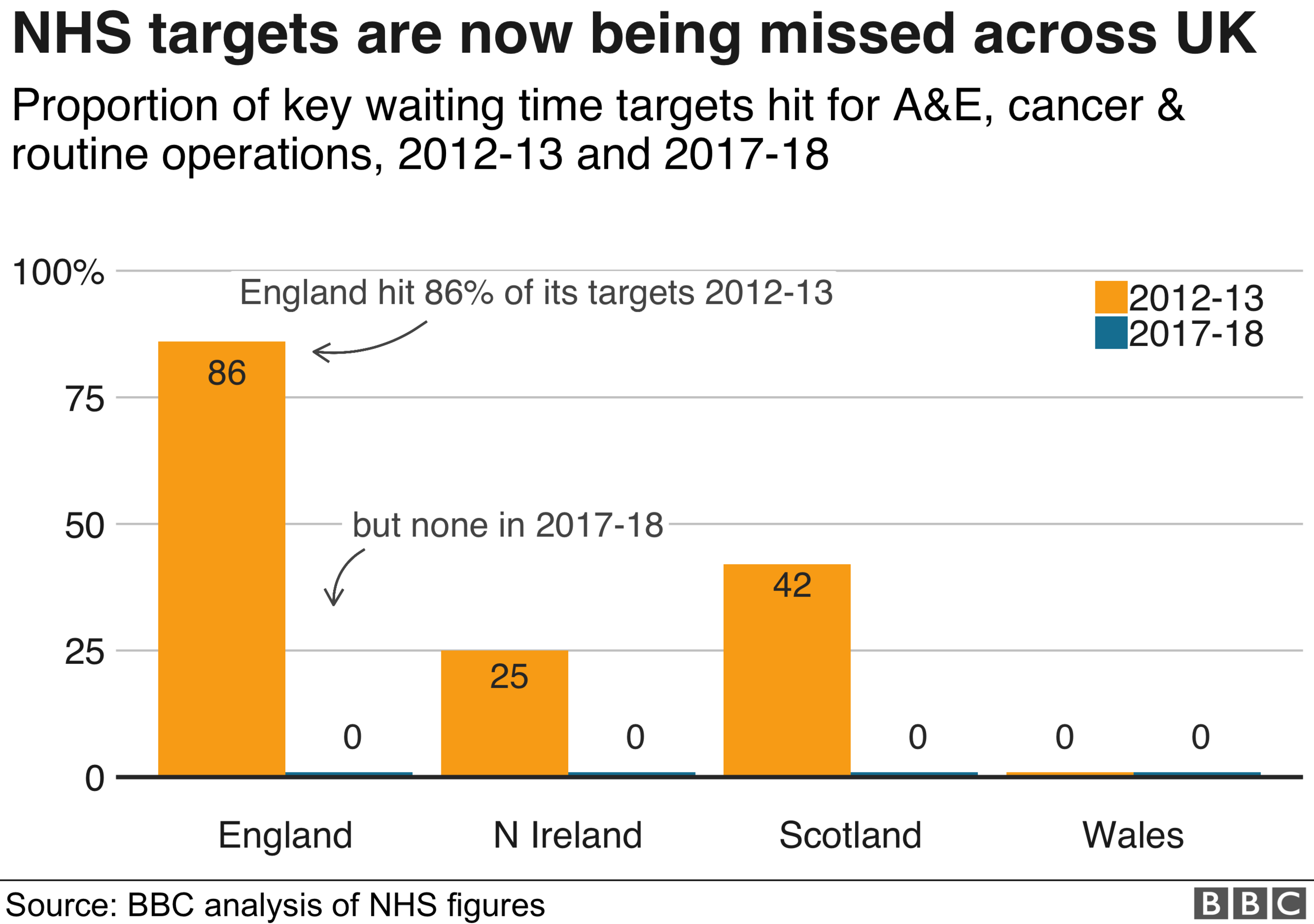
And the situation has continued every month since.
There are a variety of reasons why the NHS has struggled.
But essentially demand for care has outstripped the supply of money and, as a result, staff.
It has been a record-breaking period for A&Es
It is not just the fact the targets have been missed that has caused concern - it is also the margin of failure.
Four times in the past 18 months performance across England has slumped to a new record low.
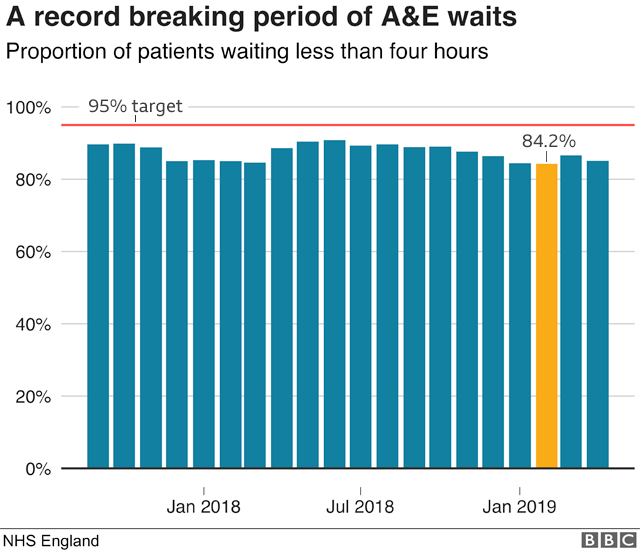
The target was introduced in 2004 in England.
Initially, units had to see and treat or admit 98% of patients within four hours.
That was later reduced to 95%
But during the past two winters, the nation's hospitals overall have been struggling to stay above 85%.
The record low was achieved in February this year, when just 84.2% of patients were seen in four hours.
Luton is simply the best
There are, however, some local services that buck the national trend.
At one point during the winter, just three individual hospital services were achieving the A&E target.
One of those was Luton and Dunstable Hospital NHS Trust. It is the only service to consistently meet the A&E and cancer targets - in fact, during the length of the tracker project, it has never missed either.
And latest figures show it is a whisker away from hitting the 18-week target for routine operations, such as knee and hip replacements.
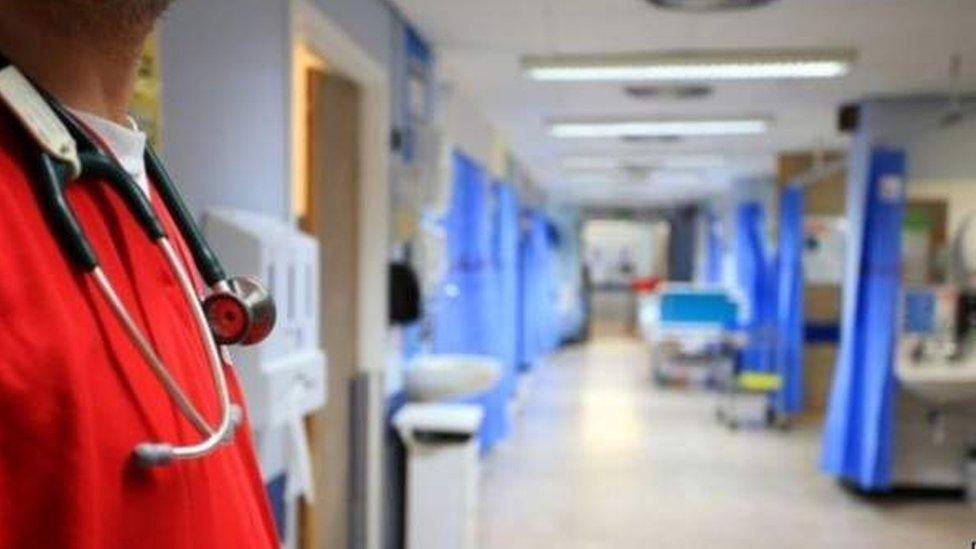
One factor in its favour is that it is a medium-sized trust.
The biggest hospitals act as regional centres and therefore see the most complex patients, which can make hitting targets arguably more difficult.
But Luton has undoubtedly introduced a number of measures that have worked - and are being followed by others.
The trust was at the forefront of putting GPs into A&E, which is now a national policy as it helps deal with patients who arrive with fairly minor ailments.
It also has a state-of-the-art operations centres - fully digitalised - that allows managers to monitor which beds are occupied and how long patients have been waiting.
This helps keep patients flowing through the system - and when bottlenecks build up, they can be identified and dealt with quickly.
There has been a marked deterioration in cancer waits
Out of all the targets, perhaps the most worrying deterioration has been in cancer.
How long patients wait for treatment is vital.
Hospitals are meant to start treatment within 62 days of an urgent referral in 85% of cases.
Five years ago, 92 NHS trusts in England were achieving that - but over the past year, that has slumped to 37.
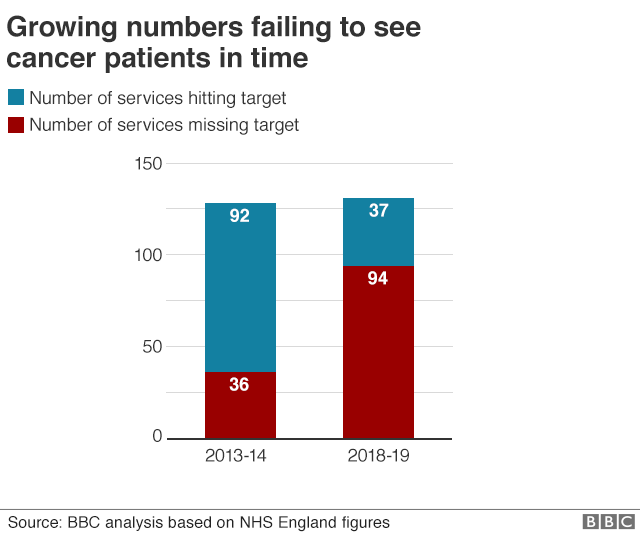
Some services have seen a significant deterioration in performance - in the case of Maidstone and Tunbridge Wells, a drop of 26 percentage points.
Wales and Northern Ireland are worse
But the struggles in England are not as great as they are in Northern Ireland and Wales.
Neither has hit a target for at least five years.
The scale of the failure - certainly in terms of A&E - far exceeds England and Scotland.
In Wales, fewer than 80% of patients are seen in four hours.
In Northern Ireland, the figure is below 70%.
Northern Ireland also has a worse record on cancer.
Currently, just over 60% of patients are seen in 62 days.
Civil servants there have said there is little chance of significant improvements in the near future.
- Published2 January 2019
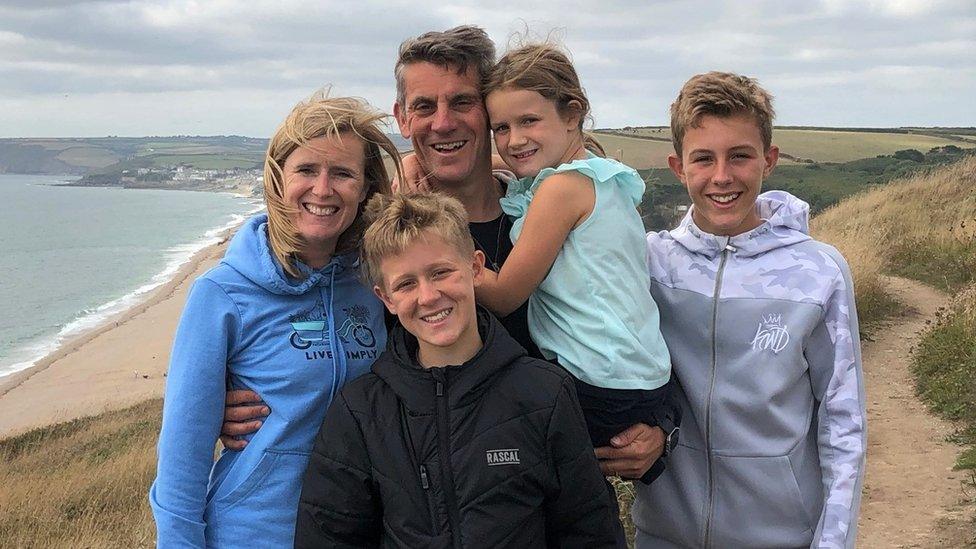
- Published8 February 2017

- Published8 February 2017

- Published6 January 2017
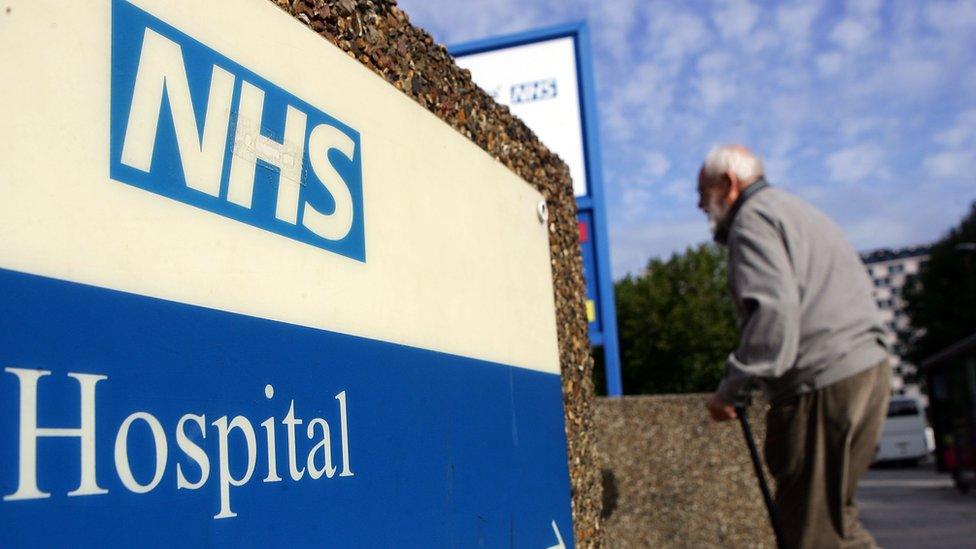
- Published12 December 2016
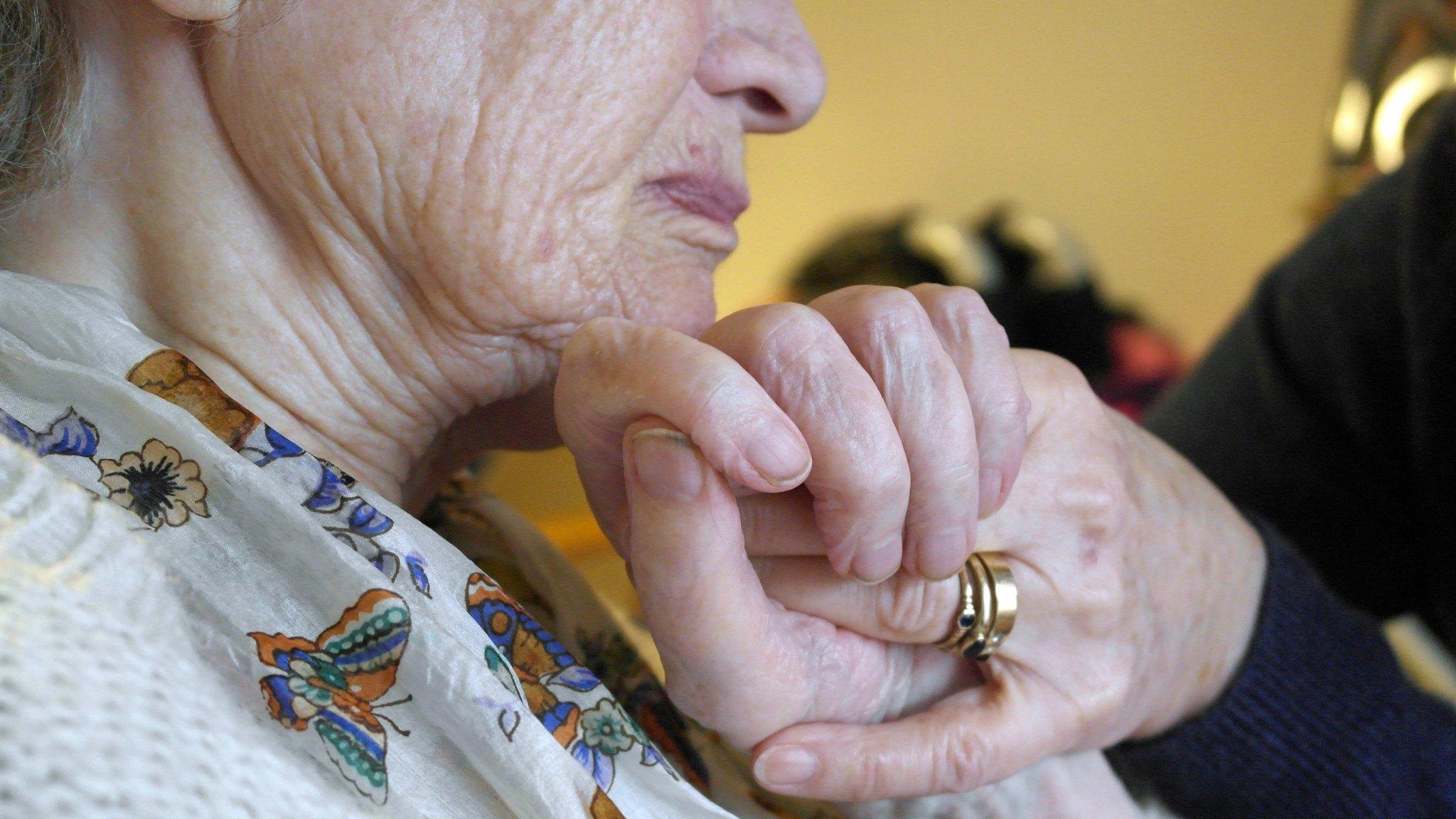
- Published13 September 2016

